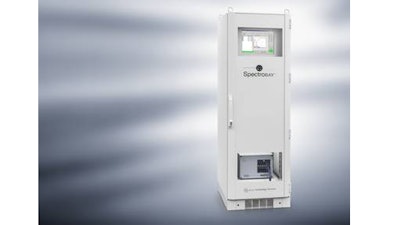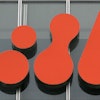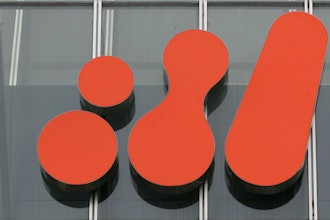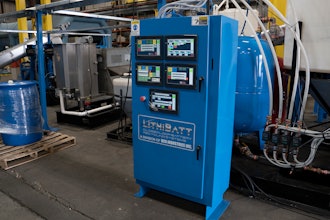
The much-celebrated boom in U.S. oil and gas production is shaking up the chemical industry in two key ways. First of all, the feedstock used to produce chemicals has changed in some plants from crude oil to natural gas.
Second, lower energy costs resulting from increases in supply of both oil and gas means that producing chemicals in the U.S. has become profitable again. New and retrofitted plants are coming online at a record pace.
Aside from the investment in bricks and mortar, bringing older plants online requires a significant outlay for newer measurement technology to ensure the plants can produce efficiently, and can increase their existing capacity to meet product demand.
One technology being used to optimize plant operations is near infrared spectroscopy (NIRS). With precise measured values over the entire production process, this technology helps to bring plant capacity to full utilization, thereby minimizing waste and downtime.
Lower Energy Prices Changing Chemical Processing Industry
Manufacturing chemicals is an extremely energy-intensive process and many U.S. chemical processing facilities were shuttered years ago as energy became too costly, and chemical processing was moved offshore, where production costs are lower. The new lower energy costs have led to a huge increase in investment in facilities - both constructing new facilities and retrofitting older ones.
Many of these existing plants previously used little or no automation technology. They relied on controlling their processes manually, taking samples, analyzing them in the laboratory, and then using the data to control the process. Or they used physical parameters like temperature, pressure, and flow to control the process automatically. However, these simple indicators cannot directly determine what is happening in the reactor, leaving the operators with no direct control over the process. In many cases complete batches had to be discarded or reproduced.
To meet today's need for efficient production, operators need a much higher level of process control; without it chemical production plants simply cannot be operated at their optimum levels.
Process Analyzer Technology Brings Efficiencies
To bring the necessary efficiencies to old and new chemical plants, most plant operators are now turning to process analyzer technology (PAT) - the real-time measurement of the composition of the chemical substances being processed.
With previously used semi-automation methods, one could determine a substance's temperature and volume, but not its qualities. With PAT, operators continue to measure volume, level, and temperature parameters, but can also literally take a look into the reactor and into the pipeline. They can evaluate the actual concentration of the different substances present and the state of the reaction. This is the most direct control one can have over a reaction.
A range of online-capable process analysis technologies are available that can be used flexibly to measure the parameters in question. For the kind of substances most frequently analyzed in chemical production, the two most frequent PAT technology types are spectroscopy and chromatography, as shown in Table 1.
These two methods are comparable in that each can measure the concentration of substances in a process. However, if we look at a direct comparison among a range of analytical methods in process analysis technology, the advantages of NIR spectroscopy become extremely clear.
The main disadvantage of the GC method is that the sample needs to be extracted and run very slowly through a GC column before reaching the analyzer. This is not only a safety concern (when handling toxic substances), it also takes a long time before the entire sample can be analyzed and results obtained. The sample system is a high maintenance method - sample lines can plug and the columns have to be exchanged over time since they wear out. By comparison, NIR spectroscopic methods are non-intrusive and do not extract any samples. They are also much faster, measuring within seconds and providing an immediate result. This allows adapted subsequent control technology to react swiftly and optimize the process cycles.
Although NIR and GC have similar acquisition costs, GCs involve a variety of additional expenses for operating materials, including carrier and reference gases, as well as the costs of new columns.
Over the past decade, NIRS has established itself as an ideally suited tool for the quantification of chemical compositions. Its advantages include a combination of multiplexing capability, inline measurement, and easy installation in hazardous areas.
In the spectrum of electromagnetic waves, the NIR range is just above the range of visible light in frequency. Each different molecule absorbs certain fractions of the electromagnetic radiation that shines on or through it, allowing conclusions to be drawn about its structural composition. The detected absorption spectrum can then be represented in a diagram, as shown on.
Light passing through the sample is weakened through absorption, leading to a substance-specific spectrum. In the example, light (incident radiation) with an intensity of I0 is guided through the sample in the test tube.
On the other side, the eye registers the light that has passed through the sample (transmitted radiation), which has an intensity of It. The difference between the light spectrum emitted by the light source and the spectrum of the light received by the sensor correlates to the chemical composition of the mixture of substances to be measured.
Using NIRS to Ensure Optimum Plant Operation
Chemical processing plant operators have one all-important question on their mind at all times: How can the existing plant perform to its optimum? This aim is referred to as a high space-time yield.
The key factor in optimizing chemical production is knowing the chemical composition of materials in the plant - anywhere, at any time, and for all incoming materials and catalysts. Also necessary is the ability to track chemical conversions and use tools to provide comprehensive quality assurance of the final product. NIRS is an extremely useful tool for these purposes, since it can be used to take online measurements in various process stages.
Instead of individual wavelengths, a whole spectrum is considered, which provides an enormous amount of information that allows for a safe interpretation of the measurement results - even after changes in the substance matrix.
With NIRS, a dense network of NIR measuring points means precise data and thus better control and greater plant efficiency.
For example, take a chemical processing plant in which several educts and raw materials are reacted with a catalyst, perhaps in a solvent. To function properly, such a process requires making precise measurements at many stages.
At the beginning of the process, the quality of the incoming material is checked. Does it fulfill the requirements in terms of all its characteristics, especially identity and purity, and is this also true of the necessary secondary components?
During the reaction, the chemical conversion (the progress of the reaction), must be monitored, both for safety reasons and to ensure that the production process runs perfectly. This includes keeping a sharp eye on the concentration and condition of residues and byproducts. And, of course, this all has to take place frequently and repeatedly during the process.
The objective is a perfect product that precisely fulfills quality parameters, and a production process that is profitable and, of course, safe. The product must at least meet the required specifications, but it does not have to be better than they are.
A chemical processing plant is designed for 100% plant capacity, so operating at only 90% capacity is not exploiting its full capacity. Resources remain unused and potential profit is not achieved. But to achieve optimum profitability, the chemical process must also run optimally. The precondition for this: knowing the exact composition of the materials in the plant.
To control something, you have to measure it first. The demands on the measurement technology vary considerably. Batch processes, processes that run 'closed' with all ingredients in one vessel, call for prolonged measurement of all concentration ranges. The mixture of substances to be measured is constantly changing. In contrast, continuous processes involve substances that usually occur in similar concentrations at the same stage of the process.
Knowing about everything going on in a chemical process is therefore extremely important, and a dense network of NIR measuring points gets operators very close to optimal exploitation of plant capacity.
Gas chromatographs simply cannot do this. With GC, samples have to be taken, transported, and disposed of after analysis, and it takes several minutes before the results of the analysis are available, a delay that might compromise the accurate allocation of the sample. This time lag means that it is a lot more difficult to regulate processes using GC.
New NIRS Technology Provides Higher Level Control Strategy
Thanks to recent advancements in NIRS technology, it is now being used to help both existing and new plants operate more profitably and achieve a return on investment in a shorter period of time.
For example, KROHNE's new SpectroBAY analyzer platform is designed to allow this kind of higher-level control strategy. With precise measured values over the entire production process, the technology helps to bring plant capacity to full utilization, thereby minimizing waste and downtime.
The technique can be used for measuring liquids, solids, or gases, including powders, tablets, and different monomers and polymers. Typical applications include the control and regulation of distillation, polymerization, and drying processes.
Offering repeated precise measurements at many stages, the technology can be used for quality checks for incoming material, measurement of product characteristics like identity and purity, and evaluation of secondary component characteristics, as well as monitoring reaction progress during chemical conversion for safety and production performance. Even reactions with hazardous substances like hydrazine and hydrazine hydrochloride can be analyzed and monitored. In fact, the online measurement procedure ensures that physical samples need no longer be manually collected, substantially increasing occupational safety. Table 2 provides a summary of the new technology's key uses.
For example, the new SpectroBAY system was used at an existing plant for batch distillation/isomer separation of chlorinated aromatics with nine components. Previously the plant had used conventional laboratory analytics as the basis for process control, leading to fluctuations in product quality and poor energy efficiency due to lack of reflux measurement. Plant capacity was not fully utilized.
With the use of NIR, the plant achieved energy savings through improved reflux control. The energy requirement was reduced by 20% through accurate switching and cutting of the pre-run, main run, and post-run. Product quality was improved and stabilized throughout the whole process. With consistent product quality, the sample throughput in the laboratory was also drastically reduced. The plant achieved higher profitability through reduction of batch runtime from 30 to 24 hours, resulting in a capacity increase of 19%.
It is important to note that nothing was changed on the reactor itself; operators were only controlling the process online with process analyzers, demonstrating that new measurement technology can play an important role in realizing capacity gains at existing facilities.
Another example was the technology's use for yield tracking for a two-phase production. The process involves two fluid phases that do not dissolve into each other, or that tend to separate quickly. The substances included ammonia, water, propylenediamine, and carbon disulphide.
To give the reaction time needed, the residence time cascaded over approximately eight hours. In the cascade, the ingredients are stirred, and then left to settle before being stirred again. This meant that the state of the mixture during this time was extremely difficult to determine. Conventionally extracted samples could only give a rough measurement result, which is also influenced by the separation process. The solution to this problem of lack of precision and inadequate monitoring was the use of NIR measurement at the beginning and end of the cascade.
Another important benefit of the optical online measurement was a substantial gain in occupational safety and improvement of workplace hygiene. The carbon disulphide used in the process is hazardous to health, with a potential danger each time a sample is drawn. Taking measurements inside the closed process means that the staff no longer risked coming into contact with the chemicals.
A third example is use of the technology to improve quality and reduce energy consumption for a fluidized bed granulation process. Probes were attached at the bottom of the container, which measured the spectra. The measurements were then analyzed, yielding exact data on the moisture content. The curve, which seems to tail off asymptotically, lets operators follow the moisture content exactly and identify when the end point of the drying process is reached and the product is properly granulated. Measurement takes place in quasi real-time. When the display shows that the drying process has finished, the processing of a new batch can begin. The use of inline NIR spectroscopy led to a tangible improvement in utilization of plant capacity.
Inside the New NIRS Technology
SpectroBAY houses the spectrometer system's analysis components in a single cabinet with the automation components, allowing the system to be seamlessly integrated into existing process control setups. One fiber optic cable transports the optical signal to the process; another brings the light from the probe with its spectral information back to the cabinet. Up to six probes can be connected to a standard SpectroBAY.
The returned NIR spectrum is processed using a chemometric model stored on the PC to identify the chemical components and to determine their concentrations. Chemometric refers to extracting information from chemical systems by data-driven means.
This chemometric calibration mathematical model is the heart of the technology. It matches the spectra and the concentration of the substances, and is specific to each application and each substance. Each chemometric model is fully customized based on the data obtained during the feasibility study. NIR technical experts analyze the process samples and data from the reference measurement and then conduct statistic modeling to build the chemometrics, verified at the customer's site before being finalized. Lifelong maintenance of the calibration model using analyzer specialists is included in the SpectroBAY system. The system also includes the design of specialized probes, which are adapted to requirements of the specific customer application.
In addition to the spectrometer, the system includes the powerful analyzer result transfer software (ARTS), which transforms results into file formats that can be forwarded to the control system. Status signals and other analyzer data can be used to flag potential errors and maintenance notifications. ARTS can also be used to compile official documentation and record consumption data and processes.
The system is remote maintenance-capable. Secured access can be set up via Ethernet; remote calibration is possible if chemometrics change or if data needs to be replaced or updated. The system has flexible integration capability in control systems via Profi-Bus, Fieldbus Foundation, 4-20 mA, and many other protocols.
In conclusion, as these examples show, chemical plants equipped with the new NIR technology operate more profitably and achieve a return on investment in a shorter period of time.























